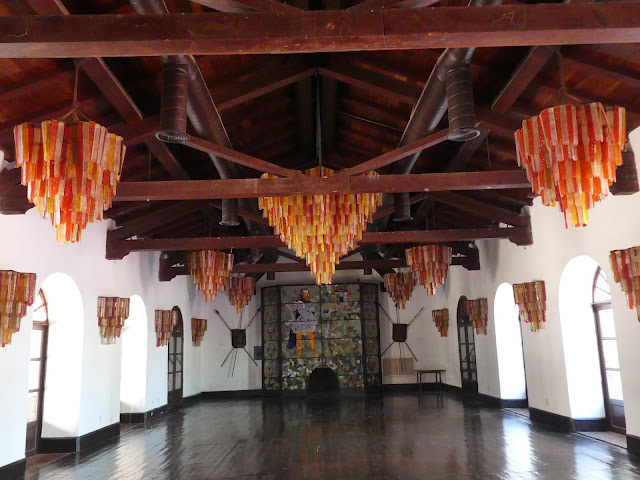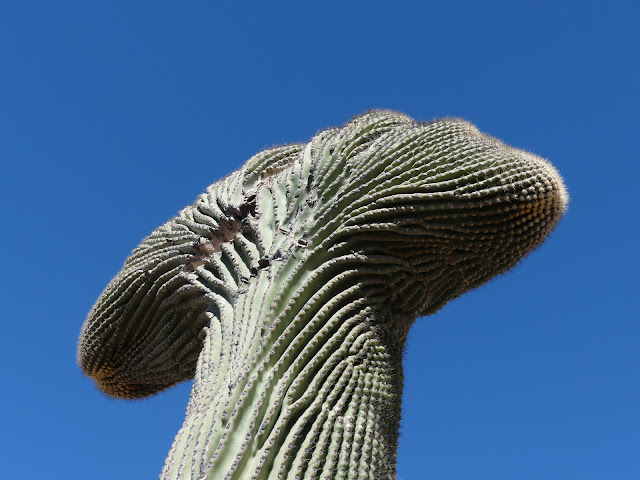This is a large poster in the main entry into the Pearl Farm building. The room is large, with all sorts of pearl jewelry, pearls and shells that produce the pearls.
This farm is unique, since it's the only one producing pearls from the Rainbow Lipped Pearl Oyster, which produces pearls that are iridescent and in many colors. They only produce about 4000 pearls each year, which is only about 4 Kilos, compared with 1800 tons of fresh water oysters as well as other varieties with production data in between. The oysters live in grids as shown below.
These are only some of the jewelry created at this location, with pearls that have been grown here. You can see the iridescence and coloration. We were told that there are no chemicals to produce the colors, the oyster is who is producing the color, which will be the same color as the shell.
This little thatched hut is where most of the work is accomplished. In the background, you can see floats on the water which support the oysters who are producing the pearls.
Among other chores, this is where the oysters are cleaned during their lifetime here. They must be cleaned of the barnacles and seaweed that grow on their shells - 5 times a year. Keep in mind that it takes 4 years to grow a pearl.
To give an idea of the size they start at, the plastic container here is about the size of a deli order of a pound of potato salad. The little tiny specks you see inside are the baby oysters. They will be put in the green bags you can see hanging in the photo above.
This is a specimen of one, but it's enlarged quite a bit.
Below are some examples of shells with pearls that have grown on their own, without help from the farm.
There are many varieties of pearls, as well as many colors..
In order to make a pearl, the oyster has to have an irritant, a tiny object for them to secrete the nacre, which grows the pearl. At the farm, the oysters are implanted surgically when they're 2 years old. The shell you see below with the bumps at the top were implanted with a tiny bead made from another shell. They will then be put into the grid for water flow, since they live on plankton. These are cut off the shell and made into jewelry when completely grown.
The chance of a pearl growing in an oyster living in the wild versus in a pearl farm is about 1 in 10,000, not very good odds if you're trying to make a living this way. The photo below shows a shell, with barnacles on the top, and with two white beads that you can see in what looks like a crack in the shell.
This oyster hasn't yet been cleaned, but this is about the size of the opening during the seeding operation. The technicians place the beads in with slender tools, they have to work fast because the oysters can only be out of the water a short time. We did get to see the lab and the procedure, but unfortunately were not allowed photos.
Here you can see the stages the oyster goes through, the tiny baby ones are put in the green bags. They graduate to the triangular ones when they're about the circumference of a golf ball. When they get to be 2 years old, they graduate to the round cages and then to the grid.
Lots more bags waiting to house the baby oysters.
This is the building that houses the Pearl Farm.
For those of you who want to see more of this Pearl Farm, I have included the link below to the instructional video we watched before the tour.






















































